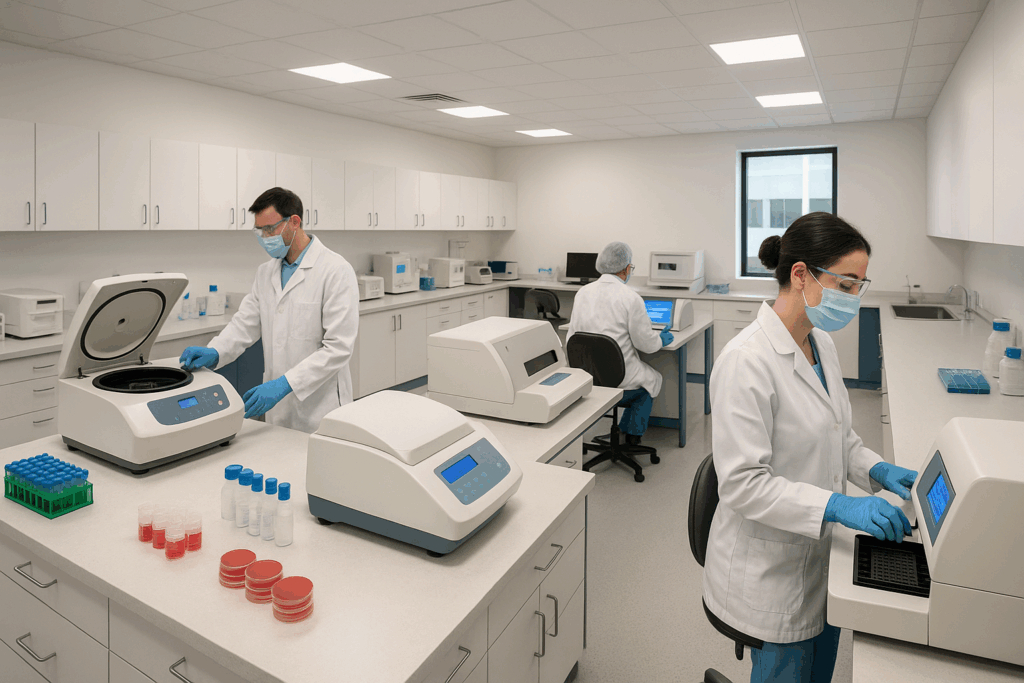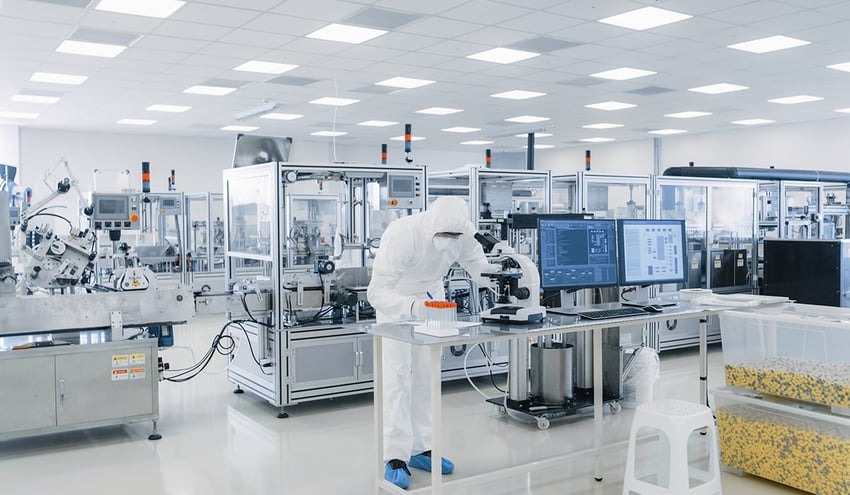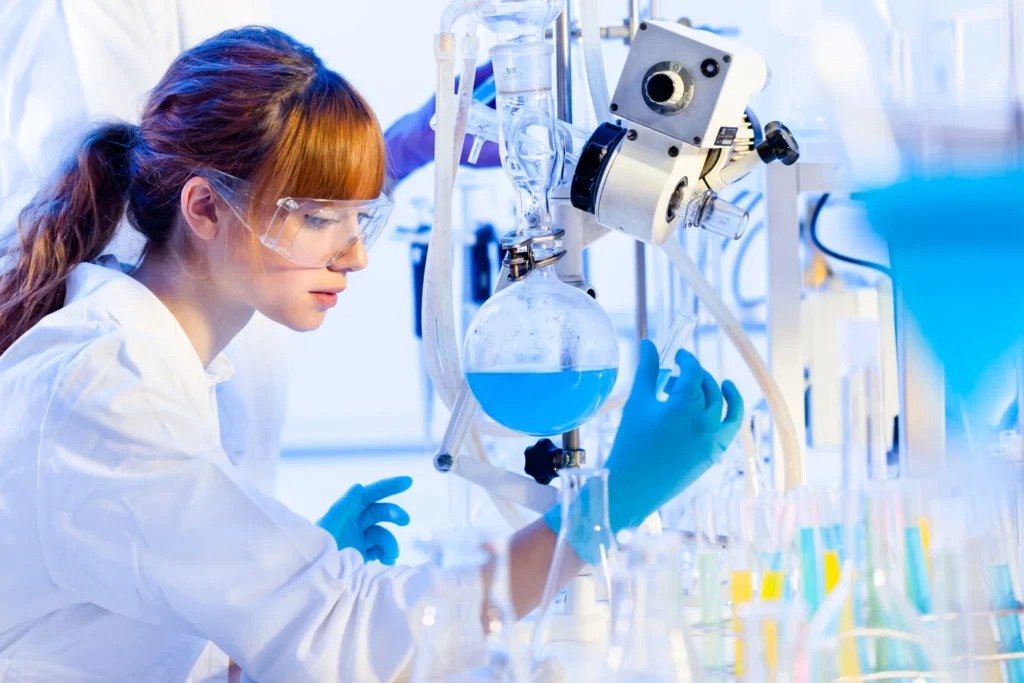Complete Guide to Setup, Equipment, and Success
Introduction
A clinical biochemistry lab is a cornerstone of modern healthcare, research, and industrial innovation. Whether you’re a professional, researcher, or business owner, establishing a biochemistry laboratory requires careful planning, investment, and compliance with regulatory standards. This comprehensive guide covers everything you need to know about setting up a clinical biochemistry lab, from infrastructure and equipment to workflow, staffing, safety, and business strategy. This post is optimized for SEO with keywords such as “clinical biochemistry lab setup,” “biochemistry lab equipment,” “medical laboratory business plan,” and “biochemistry laboratory safety.”

What is a Clinical Biochemistry Lab?
A clinical biochemistry lab is a specialized facility where biochemical analyses are performed on biological samples—such as blood, urine, and tissues—to diagnose diseases, monitor therapy, and conduct research. These labs are essential in hospitals, diagnostic centers, research institutes, pharmaceutical companies, and educational institutions1.
Key Functions of a Clinical Biochemistry Laboratory
- Diagnosis: Measuring biomarkers for diseases (e.g., glucose for diabetes, enzymes for liver function).
- Research: Studying metabolic pathways, drug effects, and genetic disorders.
- Quality Control: Ensuring product safety in food, pharmaceuticals, and industrial processes.
- Education: Training students in laboratory techniques and scientific principles.
Planning Your Clinical Biochemistry Lab
1. Define Your Lab’s Purpose
- Medical Diagnostics: Focus on patient testing and clinical services.
- Research: Emphasize experimental protocols and advanced instrumentation.
- Industrial/Quality Control: Prioritize high-throughput screening and regulatory compliance.
- Educational: Support practical training and curriculum requirements.
2. Market Analysis and Business Plan
- Target Market: Identify your primary clients—hospitals, clinics, research organizations, or industry partners.
- Competitive Analysis: Assess local and regional competitors, their services, and pricing.
- Regulatory Landscape: Understand licensing, accreditation, and compliance requirements (e.g., NABL, CAP, CLIA).
- Financial Projections: Estimate startup costs, operational expenses, and revenue streams3456.
3. Facility and Infrastructure
- Location: Choose a site with easy access for clients and sample logistics.
- Space Planning: Allocate areas for sample reception, processing, analytical work, storage, and waste disposal.
- Utilities: Ensure reliable water supply, drainage, electricity (with backup), and ventilation78.
Essential Equipment and Instruments
A well-equipped clinical biochemistry lab should have the following core instruments:
| Equipment | Purpose/Function |
|---|---|
| Spectrophotometer | Quantifies biomolecules by measuring light absorption |
| Centrifuge | Separates components based on density |
| pH Meter | Measures acidity/alkalinity of solutions |
| Analytical Balance | Precise weighing of samples and reagents |
| Incubator | Maintains optimal temperature for cultures/reactions |
| Autoclave | Sterilizes equipment and media |
| Microscopes (light, fluorescence, electron) | Visualizes cells and biomolecules |
| Gel Electrophoresis System | Separates DNA, RNA, or proteins |
| PCR Machine | Amplifies DNA for genetic analysis |
| HPLC System | Separates and quantifies chemical compounds |
| ELISA Reader | Measures antigen-antibody reactions |
| Refrigerators/Freezers | Stores reagents and biological samples |
| Water Bath | Maintains constant temperature for reactions |
| Vortex Mixer | Mixes solutions quickly and efficiently |
| Micro Pipettes | Accurate liquid handling |
| Bio Safety Cabinet | Protects samples and personnel from contamination |
This list is not exhaustive but covers the primary requirements for most clinical biochemistry labs9101112131415.
Laboratory Design and Workflow
Layout Considerations
- Sample Reception Area: For logging and initial processing.
- Pre-Analytical Section: Centrifugation, aliquoting, and sample preparation.
- Analytical Section: Houses major instruments and testing stations.
- Post-Analytical Section: Data analysis, result validation, and reporting.
- Storage: For samples, reagents, and hazardous materials.
- Waste Management: Dedicated area for safe disposal of biohazardous and chemical waste8.
Workflow Optimization
- Unidirectional Flow: Minimize cross-contamination by ensuring samples move in one direction.
- Zoning: Separate clean and contaminated areas.
- Automation: Use Laboratory Information Management Systems (LIMS) for tracking and reporting.
Staffing and Training
Key Personnel
- Lab Director/Manager: Oversees operations, compliance, and quality assurance.
- Clinical Biochemists: Design and interpret tests, troubleshoot instruments.
- Medical Laboratory Technologists: Perform routine and specialized analyses.
- Technical Assistants: Support sample processing and equipment maintenance.
- Administrative Staff: Handle billing, logistics, and customer service.
Training and Competency
- Initial Training: On SOPs, equipment use, and safety protocols.
- Ongoing Education: Updates on new technologies, quality standards, and regulatory changes.
- Competency Assessment: Regular evaluation to ensure proficiency and compliance.
Safety and Quality Assurance
Safety Measures
- Personal Protective Equipment (PPE): Lab coats, gloves, eye protection, and masks.
- Biosafety Cabinets: For handling infectious materials.
- Chemical Safety: Proper storage, labeling, and handling of reagents.
- Fire Safety: Extinguishers, alarms, and emergency exits.
- Waste Disposal: Segregation and safe disposal of biological and chemical waste
Quality Control
- Internal QC: Regular calibration of instruments, use of control samples.
- External QC: Participation in proficiency testing programs.
- Documentation: Maintain detailed records of procedures, results, and incidents.
- Accreditation: Seek certification from recognized bodies (e.g., NABL, CAP, ISO).
Common Clinical Biochemistry Tests
| Test Profile | Analytes Measured | Clinical Relevance |
|---|---|---|
| Lipid Profile | Cholesterol, Triglycerides, HDL, LDL | Cardiovascular risk assessment |
| Blood Sugar | Glucose (random, fasting), HbA1c | Diabetes diagnosis and monitoring |
| Liver Function Test | AST, ALT, ALP, GGT, Bilirubin, Albumin | Liver health, hepatitis, cirrhosis |
| Kidney Function | Urea, Creatinine, Uric Acid, Electrolytes | Renal function, dehydration, nephropathy |
| Cardiac Profile | CK, LDH, Troponins, AST | Myocardial infarction, heart disease |
| Bone Profile | Calcium, Phosphate, ALP, Magnesium | Bone disorders, parathyroid disease |
| Hormone Assays | TSH, FSH, LH, Prolactin, Cortisol, Insulin | Endocrine disorders |
| Electrolytes | Sodium, Potassium, Chloride, Bicarbonate | Fluid and electrolyte balance |
These tests are fundamental to clinical diagnosis and patient management.
Regulatory Compliance and Accreditation
- Licensing: Obtain local and national licenses (e.g., NABL in India, CLIA in the USA).
- Accreditation: Demonstrates adherence to international quality standards.
- Documentation: Maintain SOPs, equipment logs, and personnel records.
- Audit Readiness: Regular internal and external audits to ensure compliance.
Budgeting and Financial Planning
Startup Costs
- Infrastructure: Renovation, utilities, and security.
- Equipment: Purchase, installation, and calibration.
- Consumables: Reagents, glassware, PPE, and disposables.
- Staffing: Salaries, training, and benefits.
- Licensing and Accreditation: Application fees and inspection costs.
Operational Expenses
- Reagent and Consumable Replenishment
- Equipment Maintenance and Service Contracts
- Utilities (Electricity, Water, Internet)
- Waste Disposal Services
- Insurance (Liability, Fire, Theft)
Revenue Streams
- Diagnostic Testing Services
- Research Contracts and Grants
- Training and Educational Programs
- Consulting and Quality Assurance Services
Develop a detailed business plan with financial projections to attract investors and manage growth34165617.
Marketing and Growth Strategies
- Digital Marketing: SEO-optimized website, social media, and online advertising.
- Partnerships: Collaborate with hospitals, clinics, and research organizations.
- Quality Differentiation: Emphasize accreditation, turnaround time, and advanced technology.
- Customer Service: Reliable reporting, transparent billing, and responsive support.
- Continuous Improvement: Invest in staff training, equipment upgrades, and new test offerings.
Trends and Innovations in Clinical Biochemistry
- Automation and Robotics: Increase throughput, reduce errors, and improve reproducibility.
- Point-of-Care Testing: Decentralized testing for rapid results.
- Molecular Diagnostics: PCR, next-generation sequencing, and genetic profiling.
- Artificial Intelligence: Data analysis, pattern recognition, and predictive diagnostics.
- Sustainable Practices: Green chemistry, energy-efficient equipment, and waste reduction.
Checklist for Setting Up a Clinical Biochemistry Lab
- Define lab purpose and scope
- Conduct market and competitor analysis
- Prepare a detailed business plan
- Secure funding and location
- Design lab layout and workflow
- Procure essential equipment and consumables
- Recruit and train qualified staff
- Implement safety and quality protocols
- Obtain necessary licenses and accreditations
- Launch marketing and outreach initiatives
Conclusion
Establishing a clinical biochemistry laboratory is a multifaceted endeavor that blends science, business, and regulatory compliance. By following best practices in planning, infrastructure, equipment selection, staffing, safety, and quality assurance, you can build a lab that meets the needs of healthcare, research, industry, or education. Stay updated with technological advancements and regulatory changes to ensure your lab remains competitive and compliant.
Keywords Used
- clinical biochemistry lab
- biochemistry lab setup
- biochemistry lab equipment
- medical laboratory business plan
- laboratory accreditation
- laboratory safety protocols
- biochemistry tests
- laboratory workflow
- laboratory quality control
- clinical diagnostics
- research laboratory
- laboratory automation
- laboratory compliance
- laboratory marketing strategies



